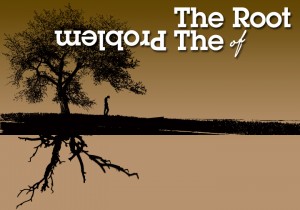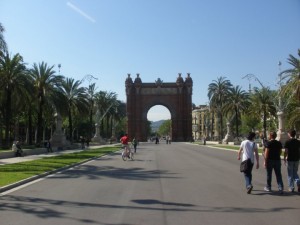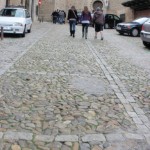Education Nation
Post #6: Inman p. 269-327
“In summary, improving urban education is both more important now than in the past and more difficult. It is more important because the economic consequences of leaving school without strong skills are greater than in the past. The work is more difficult because urban schools lack the human resources provided by middle-class students and their parents, and because they must compete for teaching and leadership talent to a much greater extent than they did in the past.” (p. 277)
We have saved the best (and most important) for last: education. Well, and crime, but I will explain later in the blog how I think the two are connected. As the quote says above, providing a quality education is not only more important now, but more difficult. Over the past year I have been working with charter schools in Tennessee to address this problem. At a policy level, improving education can be a daunting task. Even more daunting, teachers have to face even more issues of poverty, crime, hunger and cultural differences in the classroom. In this year in education reform I have walked away with one clear statement: one size does not fit all. Students, schools, teachers, families, school boards, cities and states are all different when it comes to education, and unfortunately, you have to think of ALL of these factors when making education decisions. The most frustrating piece of it all is that truly, our only priority should be the students.
In my work with charter schools I have had a glimpse into how broken our education system can be. The book mentions the issue of facilities and funding with charter schools. Charter schools were created to provide another public school option for families. They receive public dollars, but receive the autonomy to work differently in the school system. They may receive more freedom on teacher salaries, school curriculum and student schedules, but in exchange they promise to exceed the public school academic standards. Overtime we have seen that some charter school students do not outperform their public school peers. Most cases, they do. Charter schools are public schools who serve public school students, but unfortunately, over the years districts have become hostile to charters.
Here in Memphis specifically, MCS (now Shelby Co.) has been relatively welcoming to charters, but not exactly hospitable. For example, we have about 30 charter schools here in Memphis. Although they are a public school, they are not given a public school building to use. Some schools spend months searching for a suitable building for their school at a decent price. Charter schools receive their BEP (basic education program) funding from each student enrolled in their school, just as every other public school. Unfortunately, instead of spending 100% of this money on teachers, school supplies and daily operations of educating students, they have to spend a large percentage to pay for their school building. This is not the case for traditional public schools. Additionally, in Memphis, this BEP funding has been shortchanged for charter schools. Erroneous fees, unexplained with holdings, and even extortion have come into play to explain a missing percentage of BEP funding from charters. Our school district is taking away money from charter schools (STUDENTS) due to political prejudices. How is this helpful for our nation’s education problem? See the below video to explain this issue further:
http://www.youtube.com/watch?v=4JISG1pZGWM
Now the connection of education and crime. Did you know that there are people who base the size of prisons on schools? Whether it is third grade reading scores or high school drop out rates, there is someone out there who is analyzing this data to predict how many prisons our nation needs to build. Disgusting.
With our students focused on school, eager to attend college, and involved in a school culture that promotes citizenship and responsibility, they do not commit crimes. I firmly believe that a school is the first step to reaching into the neighborhood. I understand that it is not as easy as it sounds, but no one can argue that a great school encourages crime. Our students can change their futures, their families and their friends. By allowing them the opportunity to succeed they will encourage and influence others around them. Check out the link below to hear from a third grader who thinks the same thing:
http://www.prx.org/pieces/76849-building-prison-beds-based-on-third-graders-test









